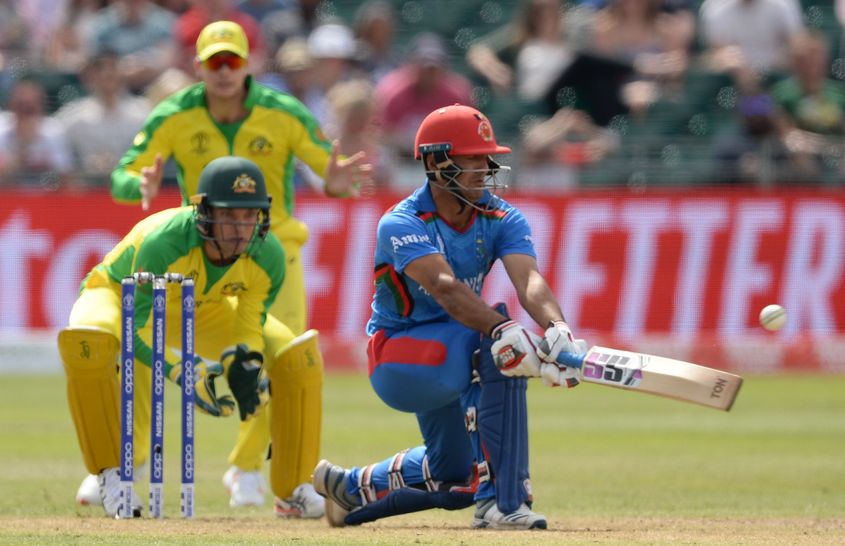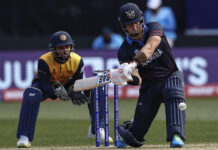The long lamented and dreaded ten-team World Cup has finally started and the arguments over the format are unlikely to cease until the trophy has been lifted if not after.
Strangely, within the general public, the argument over whether Associates should be included has been largely won. That doesn’t mean the ICC will change the format, but the change from a decade ago when a smaller World Cup was the majority position amongst journalists to now reflects a growing realisation that the game depends on its smaller (actually, mid-sized) nations.
The question for this World Cup will be not whether it lacks something without the Associate teams, but whether a ten-team World Cup is what the ICC promised: the most competitive and exciting format, harking back to 1992; or just a money-making exercise by guaranteeing India nine matches.
A calculation of revenue FROM A MORE INCLUSIVE CWC FORMAT based on Indian TV ratings indicated that the loss would be as small as 10%.
Bertus de Jong has been a consistent voice for reason on the problems with a ten-team league-format World Cup and highlighted several on Twitter around the narrative that such a long group stage brings.
My position has always been that there is no “right number” rationale for twelve, fourteen or sixteen teams over ten, eight or six. Obviously, fewer teams will have smaller gaps in performance between best and worst – though not necessarily more competitive matches. Equally obviously, large groups where a team can lose many games and still qualify, or be knocked out with matches still to play will have more dead-rubbers than knock-outs. To some extent, the “correct” size of a World Cup is the one that allows all the members a reasonable opportunity to participate.
Almost ten years ago, when the ten-team tournament was first mooted, I wrote about how large a World Cup should be noting that cricket was far removed from the roughly six-to-one ration of Association Football and Rugby Union.

I also highlighted five myths that had been inflicted on the debate at that time:
- That more teams led to a longer World Cup when that is derived from the format;
- That low odds of victory for teams with lower ranks against the top teams is normal in sport;
- That cricket doesn’t have sufficient depth for a large World Cup;
- That a larger World Cup has more pointless matches; and
- That the only purpose of a World Cup is to anoint a winner: that many teams participate to reach the next stage, or just to get there.
The third and fourth points are particularly important because they speak to the quality of the viewing experience. A few months afterwards, not satisfied with a hand-waving explanation I put forward an analytical method to look at formats. Put simply, the excitement inherent to a match is related to the change in probable outcomes.
There are beautiful match graphs for baseball that look at probabilities within a game. They show the probability of victory as a game progresses, and it is easy to see the difference between the very exciting (such as the Red Sox-Indians game shown) where the probability of each team winning shifts violently, and the not (Giants-Athletic) where it remains the same throughout.


We can assess the likely excitement of a World Cup match against a similar formula. In this case, the expected change in the probability of each team qualifying for the next stage of the World Cup.
Start with a simple example: in a knockout between evenly matched teams the probability of progressing for both starts at 50% and ends at either 0% or 100%. The change in probability adds to 1.00

A tournament where the expected change in probability was always 1.00 would be non-stop excitement. However it is also impossible. Between non-evenly matched teams the expected change in probability drops substantially.


In group matches the expected change drops further. An evenly matched four-team group has slightly less than half the excitement per game of a knockout at around 0.46. A calculation of the 2014 FIFA World Cup where teams are not equal produced an average expected change of around 0.35.

The perfect tournament would maximise the expected change in probability within other constraints – making sure each team plays a few games, getting enough content for television and so forth. The Cricket World Cup had a TV deal requiring at least 48 matches which rules out a simple 16-team with four groups of 4 and knockouts. But since 2003 it has had formats with at least this number of matches.
By simulating each round of previous World Cups we can assess them against how exciting they ought to have been. For the most part, since the small cups from 1975-1987: pretty fucking bad. Note that the key column to look at here is the simulated result, remembering that it should be as close to 1.00 as possible.

(Note that super-6 and super-8 games were not replayed. I have not adjusted for any additional interest factor from the first round matches because it is not clear how to do so).
1999 was the best World Cup format of recent times. Not surprising then that it is well remembered amongst everyone who wasn’t an English journalist. 2007 was unlucky: the first round was actually exciting, but the second round was very long and it lacked take-off as the 8-team round-robin drifted over many weeks. Recent cups have also been poor by this measure, but the 10-team World Cup will be the worst ever for interest. And it is not close. We might get lucky with multiple contenders at the pointy-end but don’t bet on it and it will be a loooong journey.
The best formats offer incentives to all teams. The recently axed World Cricket League tournaments with 6 teams, 2-up, 2-down were inherently exciting because the margin between qualification and relegation was thin. Teams expected change in probability was an average of 0.18 on both measures, giving a combined 0.36 per match.
It is for this reason that I landed on my preferred 20-team format that sends first place to a quarter-final and second and third to a repechage. First place in the group would be strongly incentivised as the winner can both skip the round of 16 and play an easier quarter-final opponent. So much so that the probability of overall victory is roughly double than for coming second or third place. More importantly, the depth of associate cricket is such that all five teams in the group would have a reasonable change of qualification in at least third place, removing the just-hear-for-the-scenery nature of most associate participation to date.
Based on rankings after the qualification tournament for 2019 a 20-team would have looked like this:

By running a similar simulation on both that format and a 32-team World Cup we can assess them against the formats to date. a 32-team World Cup would be a bridge too far – and yet still be better than a 10-team one! But a 20-team competition with a repechage and eleven knockout matches has sufficient uncertainty that it would be the best since the 8-team format last used in 1987.

Would a better format make up for lost revenue when India doesn’t slog through 9 games over two months? Perhaps not, but it is not as far off as might be expected. A calculation of revenue based on Indian TV ratings indicated that the loss would be as small as 10%. And because it is based on a more reliable revenue stream than interest in one team, it would retain value even if India flame out early.
Given the flow-on benefits to participating teams in terms of sponsorship and recognition, a larger World Cup should be a no-brainer. But, here we are, almost 10 years after it was first announced, a 10-team World Cup.
Bring coffee, you’ll need it.
Russell Degnan writes on cricket governance, finance, statistics and Associate cricket at Idle Summers, and hosts the Associate cricket podcast with Andrew Nixon. Cover photo: ICC/Getty







I would make one change, India and Pak should be in the same group, becuase their presence alone gives them lots of money, and ICC loves those games